Celebrating the legacy of South Africa’s iconic photojournalist the late Ranjith Kally
He would have celebrated his 100th birthday on November 26
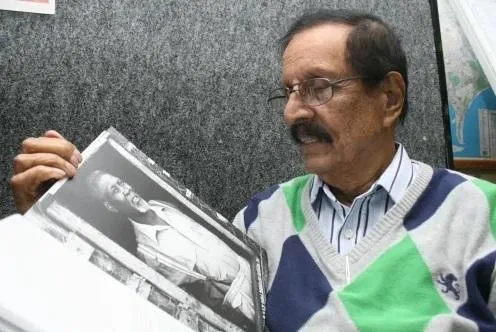
Internationally acclaimed photojournalist, the late Dr Ranjith Kally.
Image: File
THE late Ranjith Kally, an internationally-acclaimed photojournalist, stands out as a beacon of artistry having captured some of the most significant moments in South Africa’s history.
In paying homage to Kally, who would have celebrated his 100th birthday on November 26, his youngest daughter, Professor Pavitra Pillay, shared his remarkable story which started from humble beginnings as a self-taught photographer to having his work displayed at exhibitions around the world.
Early Days
Kally, the son of indentured descendants, Kallicharan and Rajwanthia, who toiled in the sugar cane fields, was born in Isipingo Rail in 1925. He passed away in June 2017 at age 91.
Pillay said Kally shared stories of his life while growing up in a “poor but loving” home.
“My dad told us that they were quite poor. He said he used to walk barefoot to school, which was about 3km from their home. He said food was also scarce and their meal was usually dhal and rice.”
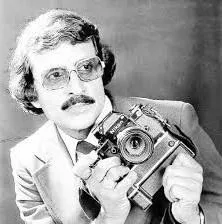
Kally as a young photojournalist while at the Golden City Post.
Image: File
Career
In Standard 6 (Grade 8), Kally left school and worked at a shoe factory.
“They were a big family and he decided to get a job to help out at home. He was responsible for fitting shoes soles which he did up to 850 a day. My dad told us that even though life was tough, his home was filled with happiness and love.
“I am not sure of the exact year, but during this time my dad stumbled upon a jumble sale where he bought his first camera, a Kodak Postcard model, for just six-pence. He initially began taking pictures for weddings and social events to supplement his wage at the shoe factory. He was also self-taught. He told us he read books on photography.
“Later on, he started freelancing as a photographer for publications such as The Leader, Drum magazine and Golden City Post. He attended events such as sports matches at Curries Fountain and other social events. But he later started capturing the struggles of people due to forced removals during apartheid, those impacted by natural disasters such as floods, and crime scenes such as murders or some sort of injustice. He also covered the triumphs of people. After 15 years he left the shoe factory and started working full-time as a photographer.
“My dad was passionate about his work and he wanted to get the stories of the people out into the public domain, whether it was good or bad. He also became well-known, and got tip-offs like when the apartheid police were going into a certain area, he would be there, ready to capture whatever was about to happen.”
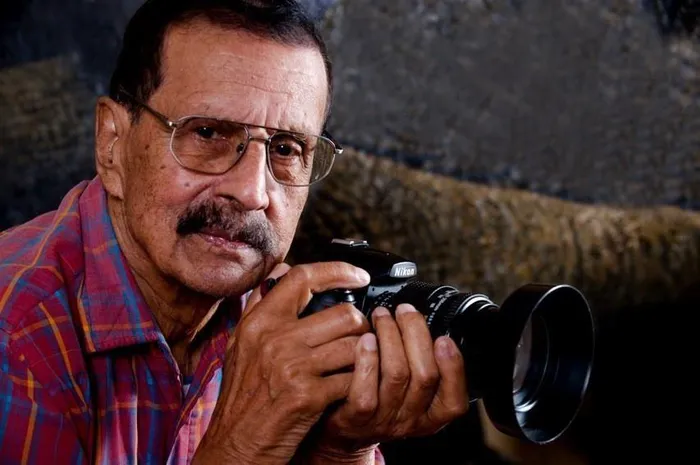
Kally, later on his career.
Image: Supplied
Pillay recalled as a child, she and her now late elder brother, Jyant, travelled with Kally to Lesotho following the “Maseru Massacre” in December 1982.
During the cross-border raids conducted by the then South African Defence Force, 30 South African refugees and 12 Basotho nationals were brutally killed.
“We were quite young when we joined our dad on his trip to capture the aftermath of what had happened. My dad also had a close friendship with the late Phyllis Naidoo (South African-born lawyer, university lecturer, and anti-apartheid activist), who was living in Lesotho at the time. We went to her home.
“At that age, we didn’t understand the full extent of what was happening but we saw our dad was sitting with prominent people who were making decisions about the way forward. Our dad was part of that, which made us feel proud of him and the work he did in society.”

With his eldest daughter, Jyoti Michael.
Image: Supplied
Pillay said Kally was also a “brave man”.
“My dad captured some of the most unforgettable moments in South African history such as the Treason Trial in 1956 and the Rivonia Trial in 1963. He told us that at some stage during the Treason Trial cameras were not allowed into the courtroom.
“However, he bravely hid his camera underneath his shirt, and through a gap he positioned the lens. He had a click-pen, and every time he took a picture he would press it as a distraction from the sound of the camera. It was a brave move as he could have faced harsh consequences for his action but he was determined to show the public what was happening,” she said.
Pillay said Kally captured pictures of important personalities in South Africa’s history, including Nelson Mandela, Chief Albert Luthuli, Oliver Tambo, Monty Naicker, and Miriam Makeba. He also captured international stars such as Tina Turner, who performed in South Africa.
“My dad shared a close relationship with Chief Albert Luthuli. He was his hero. My dad used to visit his home in Groutville, where he was welcomed by the family. My dad captured some wonderful, but intimate photographs of Chief Albert Luthuli and his family.”
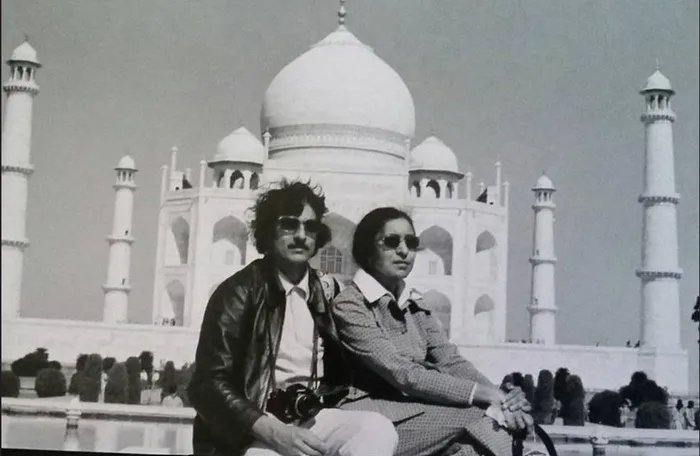
Kally with his wife Leela, now late, during a tour to India in 1976.
Image: Supplied
Family
Pillay, a professor at the Durban University of Technology, said her father married her now late mother, Leela, who was a teacher, in 1958. They had three children, her eldest sister Jyoti Michael, a retired nurse, and her brother, who was a teacher. Kally has two grandchildren.
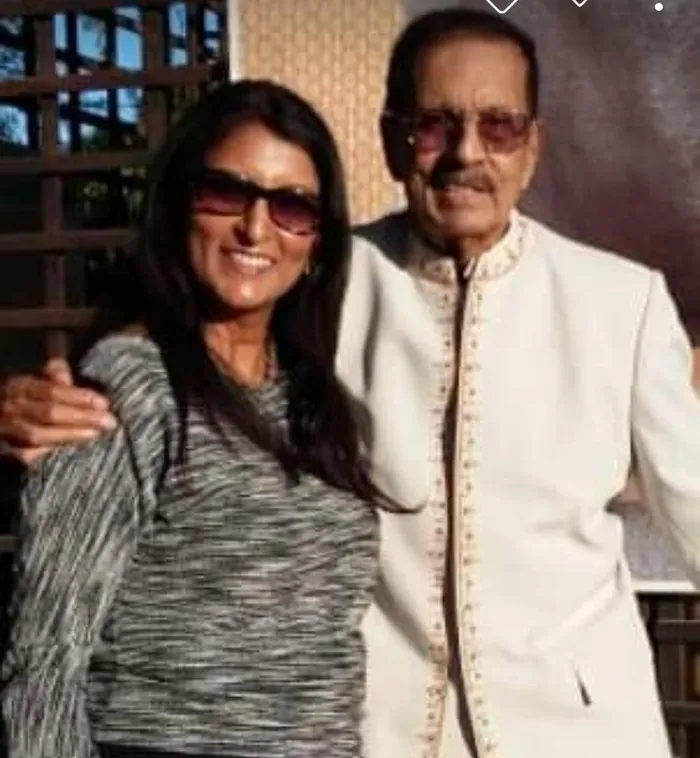
With his youngest daughter, Professor Pavitra Pillay.
Image: Supplied
Memories
In their family home in Clare Estate, Kally had a darkroom.
“My dad initially lived in what was once known as Madras Road near Botanical Gardens in Durban. He later bought land in Clare Estate and built our home. I sometimes sat with him in the darkroom. However, he always told me that I must do everything I needed to do because once the lights were off, he couldn’t put them back on until he was done or it could ruin the photographs.
“He spent hours in the darkroom, developing black and white photographs by hand. It was fascinating watching him taking the prints out of the chemicals and then hanging them up to dry. He would adjust the tone, colour, texture, and saturation, all things we do now using digital technology, he did it by hand. He was passionate and a perfectionist; his final product was proof of that.”
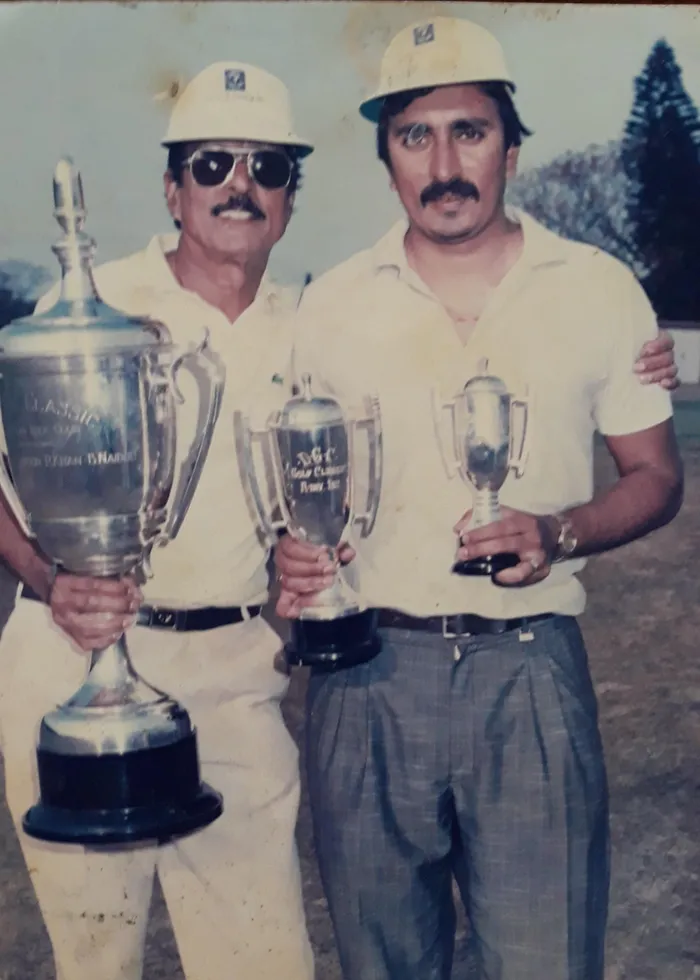
Kally, left, who was an avid golfer, shared this passion with his Jyant Kally, now late.
Image: Supplied
Pillay said she and her siblings also got to experience watching him in “action”.
“My dad used to take photographs for a picture-story comic. The main character was called 'Chunky Charlie', and the person would come to our home. He enacted different scenes, which my dad captured. It was exciting to watch.
“We attend events with my dad such as soccer or wrestling matches and the Milk Marathon in Chatsworth. Although our dad was quite a busy man, who often had to work late due to deadlines, he always made time for the family. He was an amazing cook and the life of family functions. He also enjoyed playing golf and won many tournaments. He will always be remembered for his vibrant personality.”
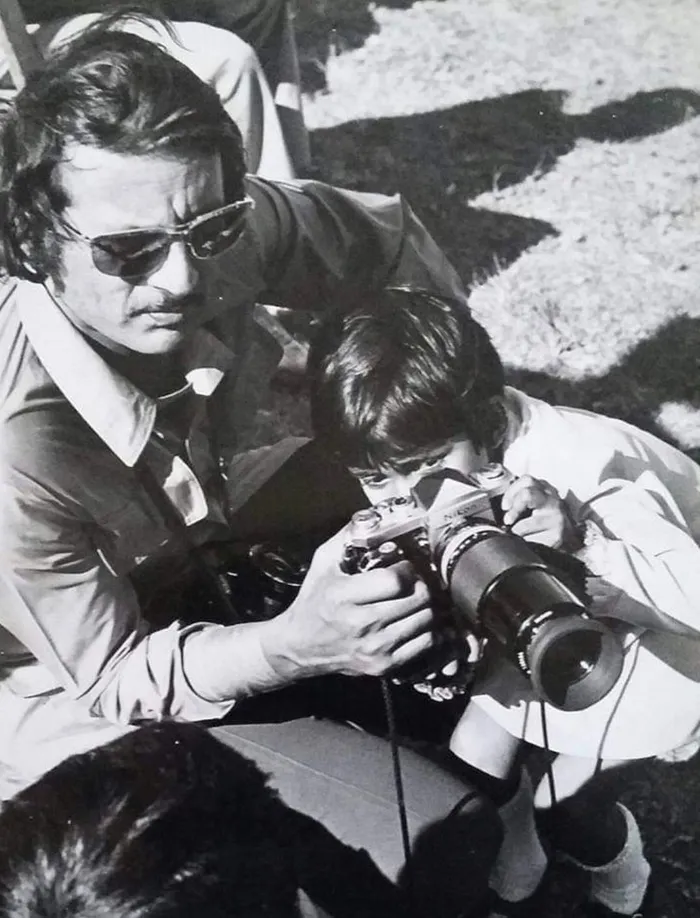
Pillay at age five with Kally at a soccer match taking a peek through the lens of his camera.
Image: Supplied
Pillay said Kally also completed a computer course in his 80s.
“He told us that he wanted to learn to use the computer so he could save all of his work. It was quite amazing and admirable that he wanted to document his work so that it could be preserved.”

At the launch of Dr Devi Moodley Rajab’s book, Women: South Africans of Indian Origin. Kally contributed the photographs, including the cover which is of his mother, Rajwanthia.
Image: Supplied
Exhibitions and books
Over the years, Kally published two books, one of which was Memory Against Forgetting: A Photographic Journey Through South Africa’s History 1946-2010, with the essays compiled by Kalim Rajab, the managing director of the New National Assurance Company and chairperson of the Helen Suzman Foundation.
The other was The Struggle: 60 Years in Focus with the text written by the late Farook Khan, a journalist and cultural activist.
In addition, he contributed his photographs to various other books, including Women: South Africans of Indian Origin by Dr Devi Moodley Rajab, and Strengths & Convictions: The Life and Times of South African Nobel Peace Prize Laureates. His photographs of Chief Albert Luthuli were used.
Pillay said Kally had exhibitions across South Africa, and his work had also been exhibited internationally.
“One of my dad’s greatest accolades was having his photographs exhibited at the Guggenheim Museum in New York, and at the Nobel Peace Center in Oslo, Norway. At the centre, which I had the opportunity to visit, are the pictures my dad had taken of Chief Albert Luthuli when he received the Nobel Peace Prize in 1960.”
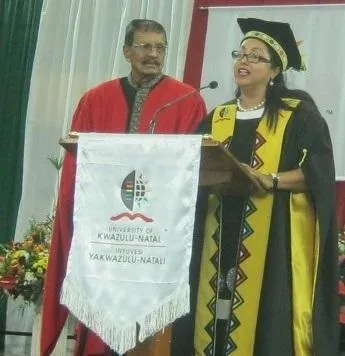
Kally received an honorary doctorate in literature from the University of KwaZulu-Natal in 2013.
Image: Supplied
Kally’s photographs appeared in school textbooks and featured in newspapers around the world. Two of his pictures were used in South African postage stamps.
In 1967, he was admitted as an Associate of the Royal Photographic Society in London, and received an honorary doctorate in literature from the University of KwaZulu-Natal in 2013.
Related Topics: